2024-07-12
한어Русский языкEnglishFrançaisIndonesianSanskrit日本語DeutschPortuguêsΕλληνικάespañolItalianoSuomalainenLatina
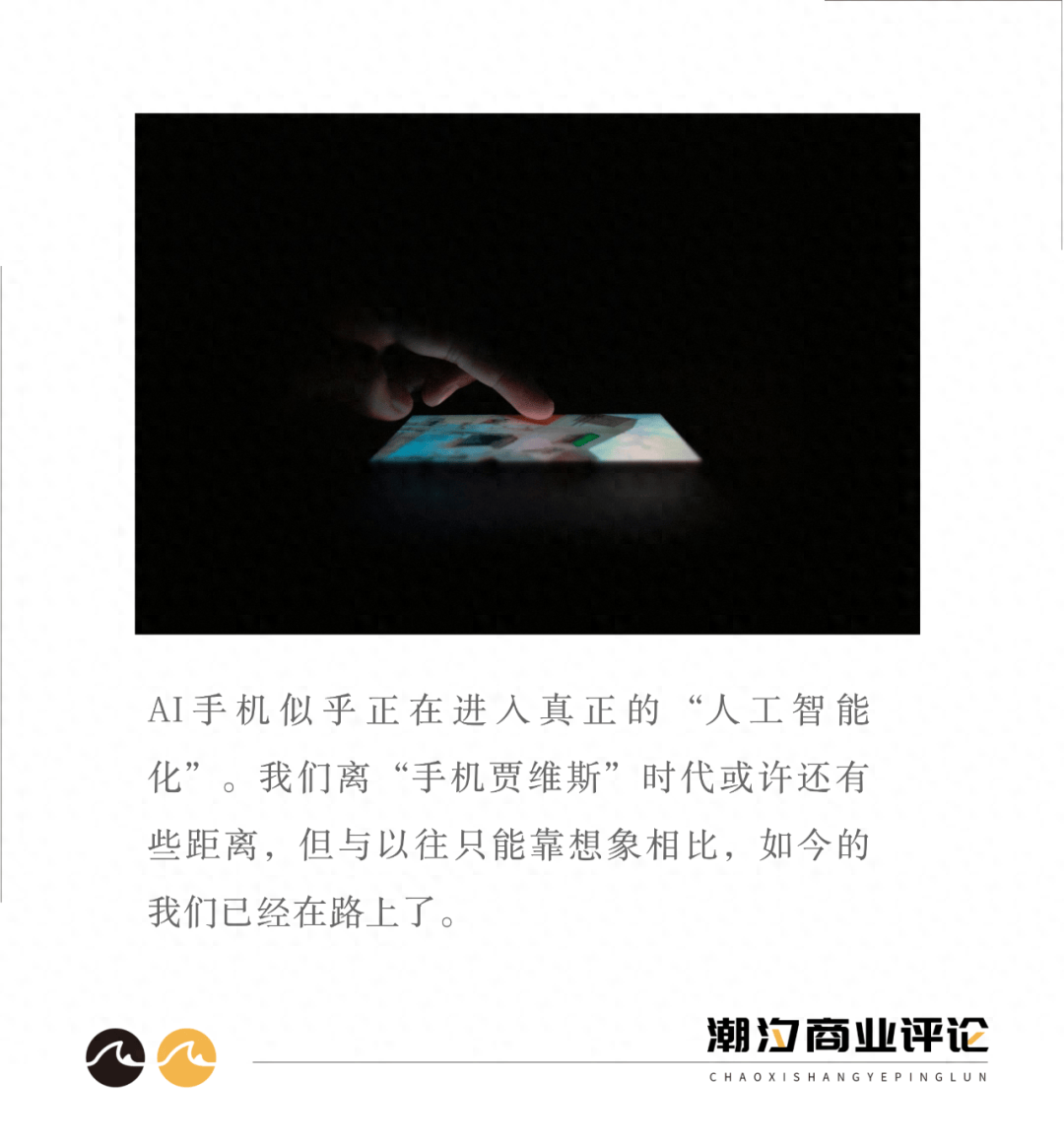
【Tide Business Review/Original】
“AI applications + smartphones are now AI phones.”
When asked about his current views on AI phones, John said, "Every profession has its own expertise. There are so many apps with AI functions, just download them and use them. There is no need to buy an AI phone now."
Regarding AI phones, perhaps most people have the same opinion as John: download AI applications and copy AI phones.
Since the second half of last year, mobile phone manufacturers have been competing for the "AI moment", from AI voice assistants to AI photo editing, to AI call summaries... It can be said that they can't wait to bind "AI" to the public's daily mobile phone use, but it also subtly projects the "shadow" of the past, with a taste of "AI stacking".
Last month, at the Apple Worldwide Developers Conference (WWDC), Apple finally brought its own AI system, “Apple Intelligence”, to the public. At the press conference, Apple highlighted the results of its in-depth cooperation with OpenAI. This AI family bucket includes smart assistants, email summaries, image modification, automatic translation, etc. Although it has not yet been launched, the public’s expectations for Apple’s “AI phone” are endless.
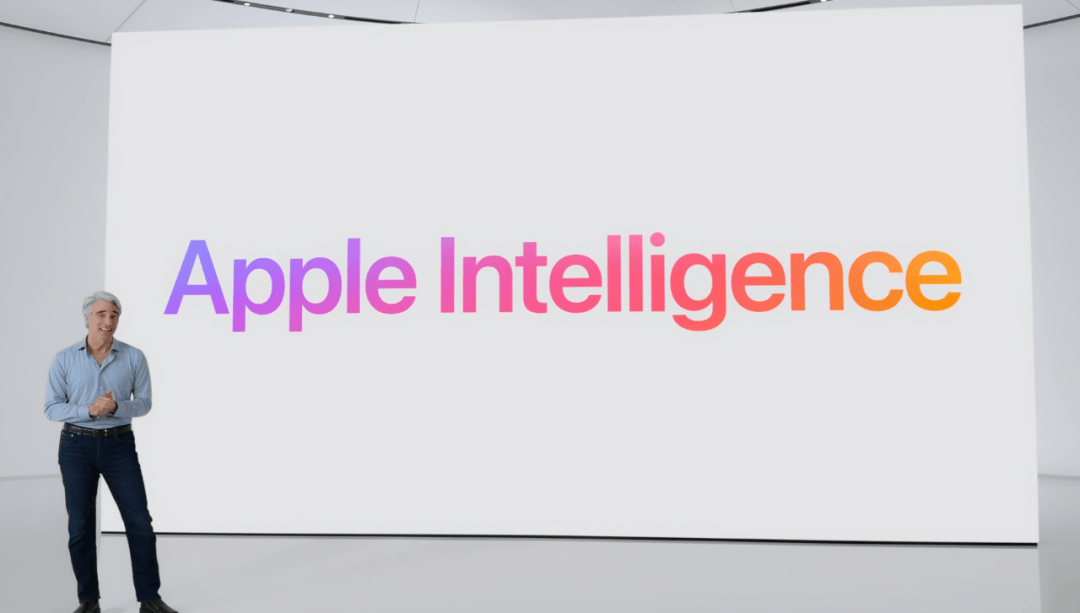
However, what is interesting is that as a groundbreaking product, the "AI phone" that Apple is about to bring out is not "surprising" enough for the current AI phone market. To be more direct, it is not "fresh" enough. The AI function it launched is already a basic operation on brands such as Samsung, Huawei, Xiaomi, OPPO, and vivo.
As one of the key points, Siri equipped with AI is more capable of recognizing user intentions, and can also connect to ChatGPT for inquiries regarding user questions, reflecting Apple's more advanced AI capabilities. But in fact, "intention recognition" has already been implemented in Honor's Magic OS 8.0's Anywhere Door function.
Whether in terms of AI strategic development or actual AI applications, domestic mobile phone manufacturers seem to be ahead of Apple in the matter of AI mobile phones.
Although Apple has lost points in terms of “speed leadership”, the final product has not yet been launched. Can Apple return to the forefront of the industry by relying on AI experience after the release of new products in the fall? Can mobile phone manufacturers who always regard “Apple” as their number one competitor achieve a curve overtaking in AI mobile phones?
The AI mobile phone "drama" is more interesting than ever before.
If your understanding of AI mobile phones is still based on the "active" application of large language models, such as "communication-type" AI functions such as semantic search, writing questions and answers, then you are still at the most basic "AI application" mobile phone stage.
Mobile phone manufacturers are moving very fast in the iteration of AI mobile phone experience. Today's AI mobile phones are moving step by step in a deeper and broader direction.
Unlike the initial "APP-based" AI that executed commands through AI application interaction, mobile phone manufacturers have now internalized the capabilities of large models into the operating system and applied them to specific mobile phone usage scenarios, achieving"AI-enabled" mobile phones, making AI "seemingly non-existent, but everywhere."
For example, generative AI is integrated into keyboard software to provide style suggestions and smart rewriting, making the input method more "human". Samsung Galaxy AI allows users to rewrite sentences in different styles and emotions, while also providing spelling and grammar correction.
In terms of image functions, there are also "intelligent" performances. For example, Xiaomi 14 and Xiaomi 14Ultra introduced the "AI Portrait" function, which allows users to use their own photos in the gallery on their mobile phones for training. After the training is completed, the user only needs to enter a text prompt to generate a realistic AI selfie in almost any setting. OPPO Find X7 Ultra can realize the AIGC eraser function, allowing you to directly delete unwanted objects or people from photos offline.
If we say that the above-mentioned "AI functions" can only reflect "tool-type" intelligence rather than artificial intelligence with a "human brain".Then, an AI mobile phone with "intention recognition" may allow you to feel like you are "talking" with artificial intelligence in a trance.Earlier this year, Honor released the MagicOS 8.0 system, whose "Any Door" AI function brought the industry's first human-computer interaction based on intent recognition. It can be simply understood that the phone can actively understand the user's intentions and provide corresponding services.
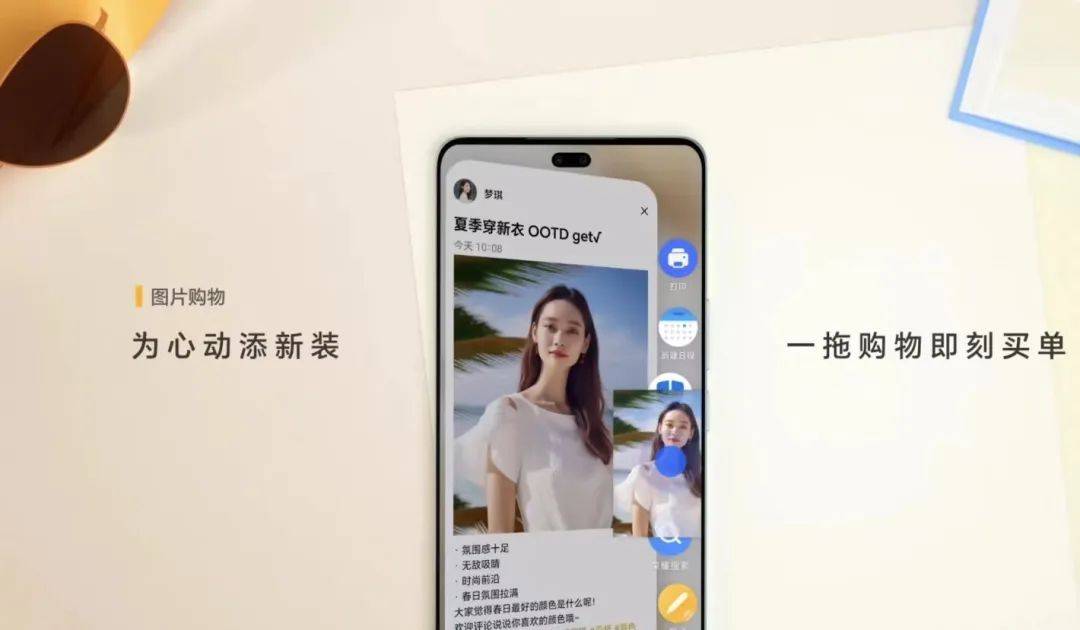
The arrival of the AI mobile phone era seems to have turned mobile phone manufacturers into "AI manufacturers", and the "wind" of AI mobile phones will eventually blow to the entire smart terminal.Recently, Lenovo released its "One-stop Multi-terminal" strategy for the AI era, relying on the "AI brain" of the Tianxi Intelligent Body System to implant AIPC, AI mobile phones, AI tablets and various AIoT devices. In the future, we will have more products with "AI smart brains" and enjoy AI experience with seamless connection in all scenarios.
There is no doubt that AI mobile phones on the domestic market today are no longer limited to simple technology demonstrations, but have formed a relatively complete ecosystem consisting of model layer, platform layer, and application layer.
Mobile phone manufacturers are breaking down the public’s layers of “prejudice” against AI phones, and our phones are getting closer and closer to becoming true “AI assistants.”
However, what is more difficult than training AI is "training" users.
Recently, Canalys released its latest report, saying that mainland China is the market with the strongest interest in AI among the world's top three smartphone markets. Consumers with "high" to "extremely high" interest in AI account for the highest proportion, reaching 31% and 12% respectively, and only 1% of consumers have no interest in AI.
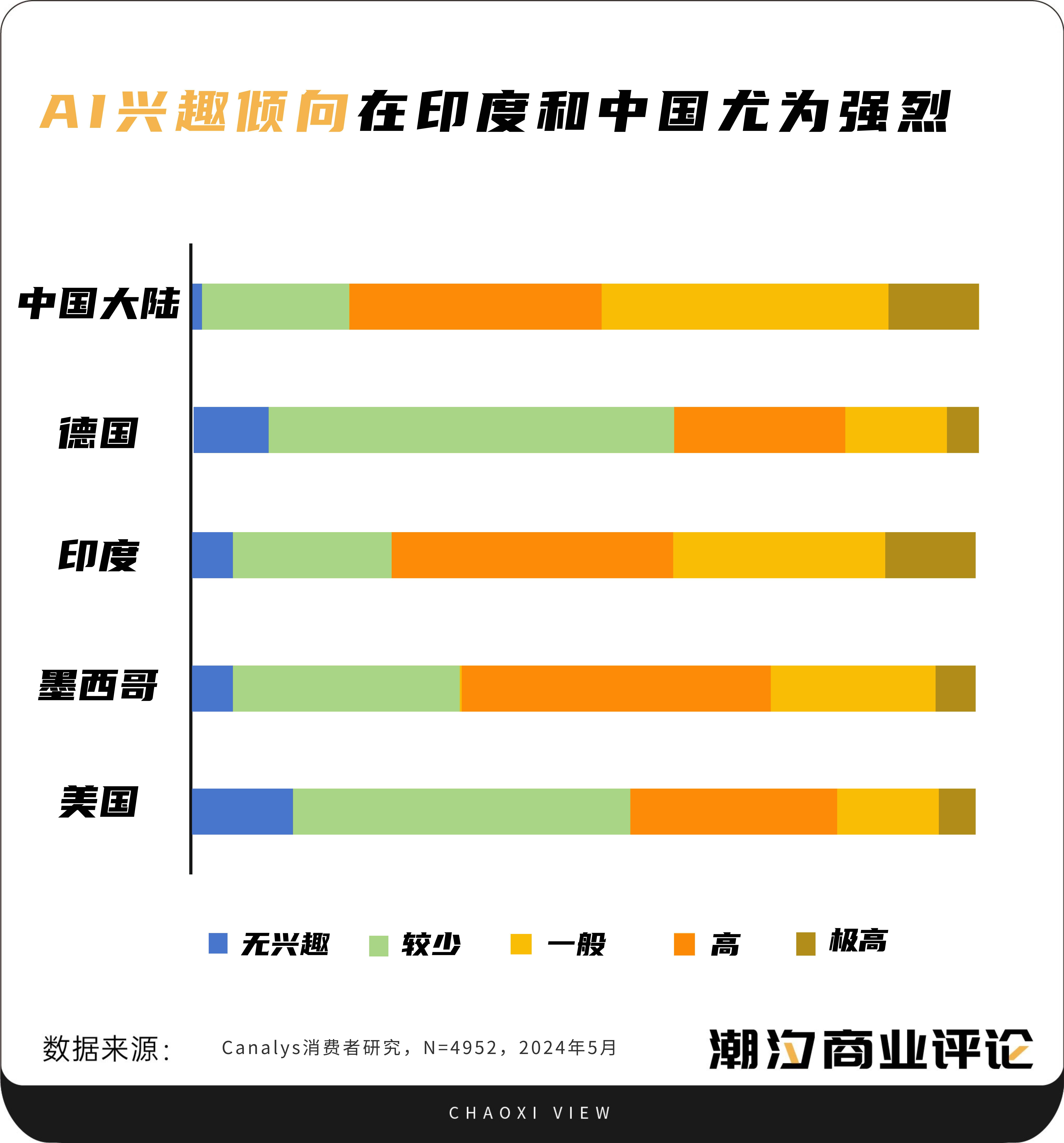
In fact, having a high interest tendency does not mean that it can be immediately transformed into "consumption motivation". Although recently, the China Academy of Information and Communications Technology released data showing that from January to May 2024, the domestic market mobile phone shipments were 122 million units, a year-on-year increase of 13.3%.
The application of generative AI is an important factor that can’t be ignored if smartphones are to return to growth. But for most consumers, “watching” or “waiting” with interest may be their true attitude towards AI smartphones.
If we look through the phenomenon to the essence, behind consumers' "calm attitude" towards AI mobile phones is actually a trade-off between "emotional value and efficiency".
The emergence of new technologies should bring more convenient and efficient experience value, but with the current implementation of AI mobile phones, before experiencing the convenience, you may have to try the "trouble" first.
First of all, the biggest change brought about by AI mobile phones is not just a substantial breakthrough in the industry itself, but also a change in user usage habits.
For example, the "AI personal assistants" that manufacturers are building use generative AI to help users "effectively" improve productivity. But in fact, let's take writing a work report as an example. The process of writing a report usually requires first thinking about and sorting out the content to be written, then executing it, optimizing the content during the execution process, and finally getting a complete work report.
Although using current AI capabilities to assist can save a lot of time, we cannot ignore the "communication cost" with AI. We need to think about how to better convey our ideas, communicate, adjust and optimize in the middle, and finally perform secondary processing on the results that are not "perfect".
Not to mention the emotional exhaustion of communication, the sense of disappointment caused by failing to meet psychological expectations after repeated communications is a key factor in users' reluctance to change their existing usage habits and accept AI.While AI seems to improve efficiency, it also increases users' "communication costs" and ignores "emotional value."
The second is the current frequency of use and substitutability of AI functions.The AI mobile phones currently on the market basically cover AI functions such as real-time two-way translation, writing and communication assistance, AI imaging and photo editing, and intelligent voice assistants. However, in the use of mobile phones, the frequency of use of these functions is not too high for most people, let alone the frequency of use.
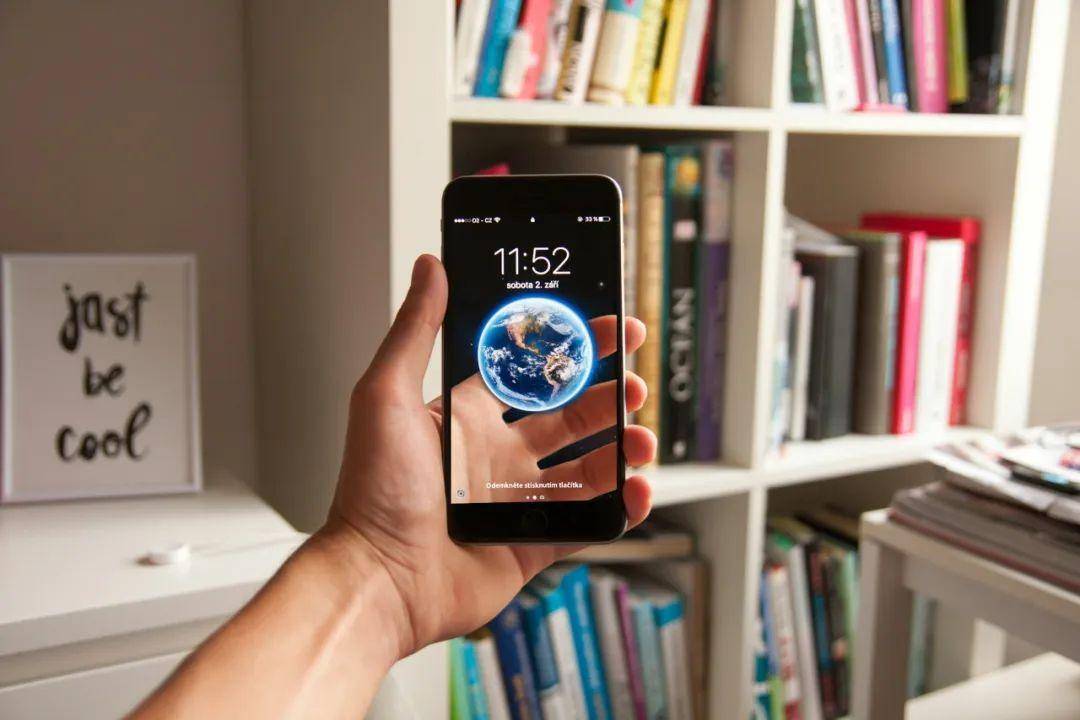
At the same time, we can see that many functional apps are also launching corresponding AI functions, which can basically replace most of the AI functions of AI mobile phones.
Let’s go back to the manufacturers themselves. Just as everyone has been defining AI phones as “personal assistant,” the main job of an “assistant” is to help do things, while a “personal assistant” is more about helping users get the results they want based on understanding them.However, the AI phones of most mobile phone manufacturers only play the role of "assistant".
Even though some manufacturers like Honor have already upgraded AI phones to the stage of "intention recognition" and artificial intelligence with a slightly "human touch", Apple Intelligence, combined with the most "intelligent" large model GPT-4o, will also be launched this fall.But at present, since there is still a lot of room for development of AI mobile phones, consumers are still waiting and watching the ongoing AI technology revolution.
Since "artificial intelligence" has been brought to the table of mobile phones in today's era, consumers naturally have higher expectations for AI mobile phones based on their imagination of "Jarvis", the all-round smart butler in the movie "Iron Man".
As for the “impulsive consumption” of AI phones, we will have to wait a little longer.
Whether it is the redundant "communication costs" or the expected gap in "emotional value", the essence is that AI phones are not AI enough.
In the Marvel Universe, JARVIS has become the ideal "artificial intelligence" in the hearts of countless fans with its outstanding intelligence and capabilities. As Tony Stark's right-hand man, JARVIS can not only manage complex home systems, but also provide real-time tactical support on the battlefield, full of technology.
"Jarvis" embodies a highly intelligent AI that can understand complex human language and emotions, and even make decisions without explicit instructions, becoming the public's ideal AI.
And when we compare this fictional image with real-life AI technology, we can see a huge gap between the two.
Although real artificial intelligence can process and analyze data, understand and generate language, it still lacks a high degree of autonomy and deep emotional understanding.Current AI relies on explicit instructions from users and cannot act as “flexibly” as Jarvis in a wide range of scenarios.
But through "Jarvis", we can also get a glimpse of the possibilities for the future development of AI mobile phones.
At present, the overall feeling that AI mobile phones bring to the public is more inclined to a sense of "technology" rather than a sense of "science and technology".
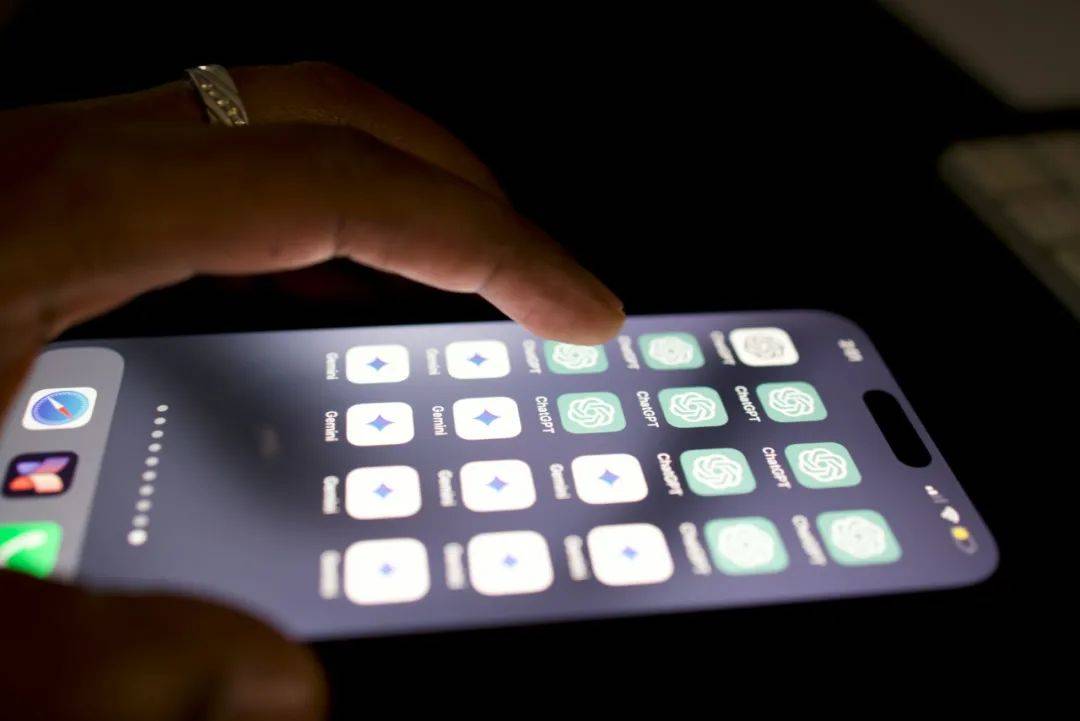
The “sense of technology” can reflect a certain degree of advancement in some aspects, but the overall feeling it gives people is relatively isolated and partial. For example, a mobile phone with a high-definition camera and a fast processor can be regarded as having a sense of technology, but the elements are relatively simple and are not enough to drive mass consumers to “buy”.
The "sense of technology" has a more comprehensive and integrated feeling. Behind this is the deep integration and innovative application of many technologies, which is the convenience and intelligence beyond traditional technologies, thus stimulating a strong "sense of technology" and giving consumers the urge to consume.
Nowadays, we seem to be able to see that AI mobile phones are developing in a more "technological" direction. For example, Honor's AI defocus eye protection technology and AI face-changing detection technology. "AI defocus eye protection technology" uses the optical principle of AI simulated defocus mirrors to allow the screen to present a defocus effect after being processed by AI algorithms, thereby achieving the effect of soothing vision. "AI face-changing detection technology" can autonomously identify the screen elements in the user's video call. If AI face-changing is detected in the video, a risk reminder will be issued to the user.
Admittedly, we may still be some distance away from the "Mobile Jarvis" era, but compared to the past when we could only rely on imagination, we are now on the road.
“Using AI to write reports is not very practical, and it is not easy to use at the current stage of development. But for someone like me who stares at electronic screens every day, if the mobile phone screen can achieve a variable defocus lens with AI, I must try such a phone,” John said excitedly.
You see, that's how business works.